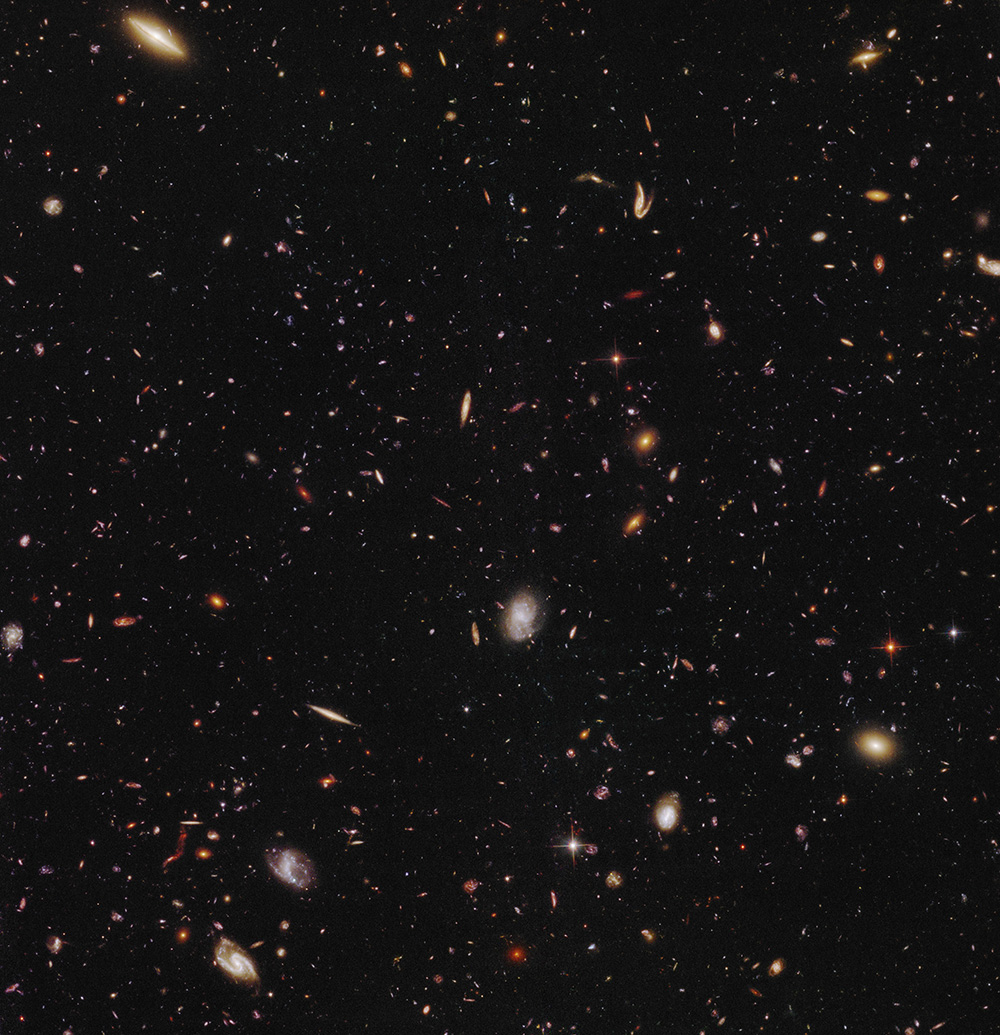
MACS 1149 Parallel Field (2015)
This is the parallel field which was imaged simultaneously alongside the MACS1149 cluster. It gives you a good idea of what this piece of space would look like if there were not a large cluster sitting within the field of view. One can clearly see there are no skinny, arcing galaxies because there is no obvious gravitational lensing going on.
Imaged in two wideband visible (filter peaks at 435nm and 606nm) and one near-infrared filter (814nm) the collection of galaxies is naturally quite colorful and requires no special modifications to bring out these colors whatsoever. There are only four Milky Way stars that I can count. Everything else is galaxies. Another sample of the Universe. Hubble and its team make this whole business of collecting billions year-old photons look like a piece of cake.
Later this year, Hubble will image this space again in longer near-infrared wavelengths, allowing us to see an even deeper image.
This chunk o’ Universe was imaged for the Frontier Fields campaign.
Data can be retrieved from the following page:
archive.stsci.edu/prepds/frontier/macs1149.html
Red: hlsp_frontier_hst_acs-30mas-selfcal_macs1149-hffpar_f435w_v1.0-epoch1_drz
Green: hlsp_frontier_hst_acs-30mas-selfcal_macs1149-hffpar_f606w_v1.0-epoch1_drz
Blue: hlsp_frontier_hst_acs-30mas-selfcal_macs1149-hffpar_f814w_v1.0-epoch1_drz
North is NOT up. It is 32° clockwise from up.
Copyright information:
Hubble data is public domain, but I put a lot of work into combining it into beautiful color images. The minimal credit line should read: NASA / ESA / J. Schmidt

This work is licensed under a Creative Commons Attribution 3.0 Unported License.


